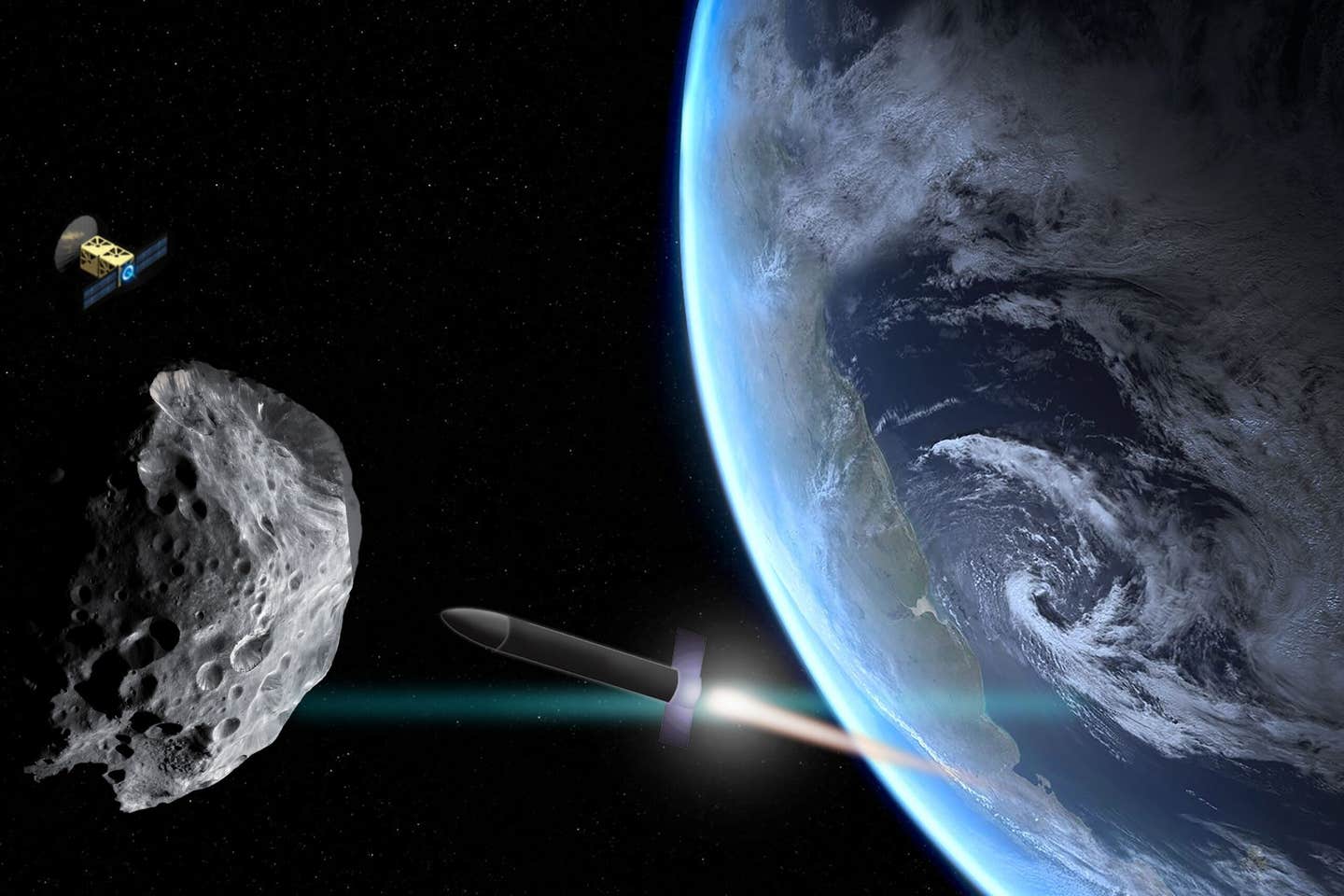Would nuking an incoming asteroid actually work? New study has the answer
Firing a nuclear warhead at a small asteroid on a collision course with the Earth could stop 99 percent of it from hitting the planet.

[Oct 15, 2021: Hank Berrien]
A nuclear warhead detonated near the asteroid in space could conceivably prevent 99% of the asteroid from hitting the planet. (Credit: Christine Daniloff)
Firing a nuclear warhead at a small asteroid on a collision course with the Earth could stop 99 percent of it from hitting the planet, according to a new study.
New research indicates that if a small asteroid were headed to collide with the earth, causing the loss of numerous lives, a nuclear warhead detonated near the asteroid in space could conceivably prevent 99% of the asteroid from hitting the planet, unlike previous estimates that asserted large parts of the asteroid would plunge to the planet.
Researchers from Johns Hopkins University and Lawrence Livermore National Laboratory wrote in the abstract for their paper, “Diverting hazardous small bodies on impact trajectories with the Earth can in some circumstances be impossible without risking disrupting them. Disruption is a much more difficult planetary defense scenario to assess, being linked both to the response of the body to shock loading and the much more complicated gravitational dynamics of the fragments in the solar system relative to pure deflection scenarios. … We find that disruption can be a very effective planetary defense strategy even for very late (sub-year) interventions, and should be considered an effective backup strategy should preferred methods, which require long warning times, fail.”
“The Center for Near Earth Object Studies at NASA’s Jet Propulsion Laboratory runs an asteroid impact simulation once every two years. The exercise from earlier this year was unique in that the fictional threatening asteroid, dubbed ‘2021 PDC,’ was detected just six months before its scheduled meeting with Earth’s surface. It was deemed an insufficient amount of time to deploy a mitigation strategy, so the participants focused primarily on disaster response,” Gizmodo explained.
The leader of the study, physicist Patrick King from Johns Hopkins University Applied Physics Laboratory, told Gizmodo:
"Simply stated, for a 100-meter object that’s projected to hit Earth, if we employ a robust nuclear disruption technique by at least one month before impact, we can prevent 99% or more of the impacting mass from hitting the Earth. …
We employed several approximations in order to make the study feasible, but we believe that we have captured the essential physics necessary to make general observations about nuclear disruption as a technique. Much of our uncertainty is driven by our inherent uncertainty in the properties of the asteroids themselves; we definitely need to support more space missions to investigate their properties in more detail. …
By making several fragments instead of one single impactor, it is possible that we multiply the threat. On the other hand, disruption has its own advantages, and a disruption could succeed where a deflection might not. This is all part of the process of evaluating what technique to use."
Humanity could “significantly reduce the scale of the disaster if we disrupt the object by as little as two weeks before impact,” he concluded.
The Daily Mail reported:
NASA is launching a mission to deflect an asteroid in deep space using a spacecraft at the end of November. Known as the Double Asteroid Redirection Test (DART) mission, the U.S. space agency will send the DART spacecraft to a pair of asteroids – the Didymos binary – at 1:20 a.m. EST on November 24 aboard a SpaceX Falcon 9 rocket from Vandenberg Space Force Base in California. DART will smash in one of the two asteroids, known as Didymoon, at roughly 13,500mph on October 2, 2022. In doing so, it will change the speed of Didymoon a fraction of a percent, but it will be enough so NASA can measure its altered orbit.
Like these kind of feel good stories? Get the Brighter Side of News' newsletter.
Tags: #New_Discoveries, #Space, #Asteroids, #Nuclear_Weapons, #Earth, #Science, #Research, #The_Brighter_Side_of_News
Joseph Shavit
Head Science News Writer | Communicating Innovation & Discovery
Based in Los Angeles, Joseph Shavit is an accomplished science journalist, head science news writer and co-founder at The Brighter Side of News, where he translates cutting-edge discoveries into compelling stories for a broad audience. With a strong background spanning science, business, product management, media leadership, and entrepreneurship, Joseph brings a unique perspective to science communication. His expertise allows him to uncover the intersection of technological advancements and market potential, shedding light on how groundbreaking research evolves into transformative products and industries.



